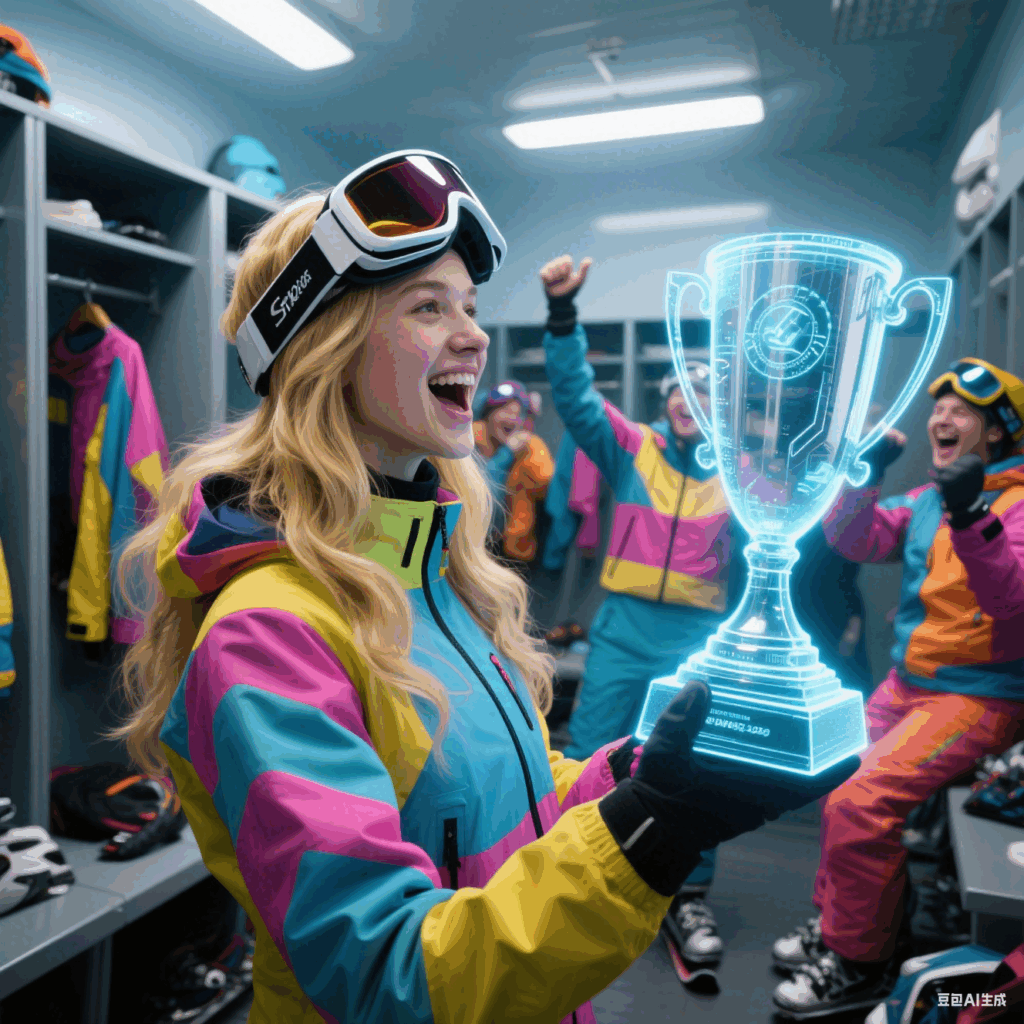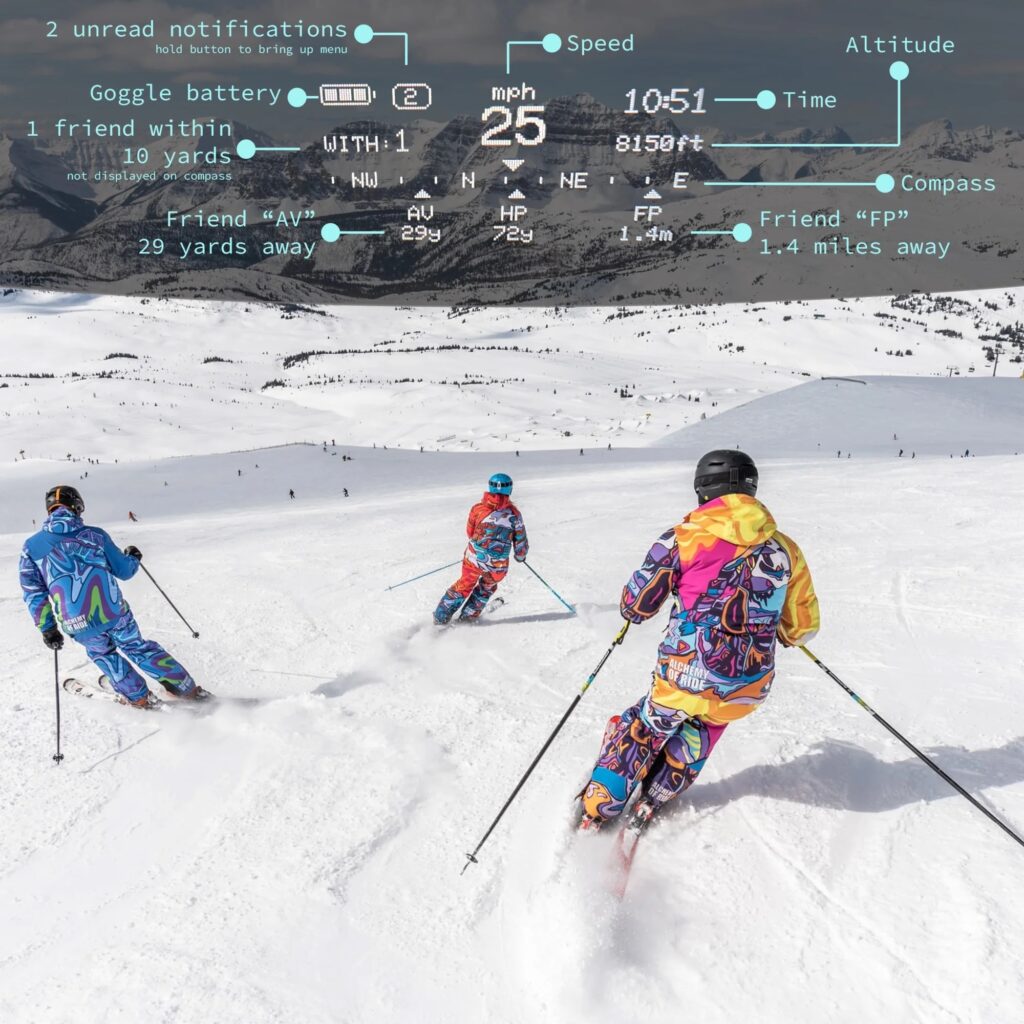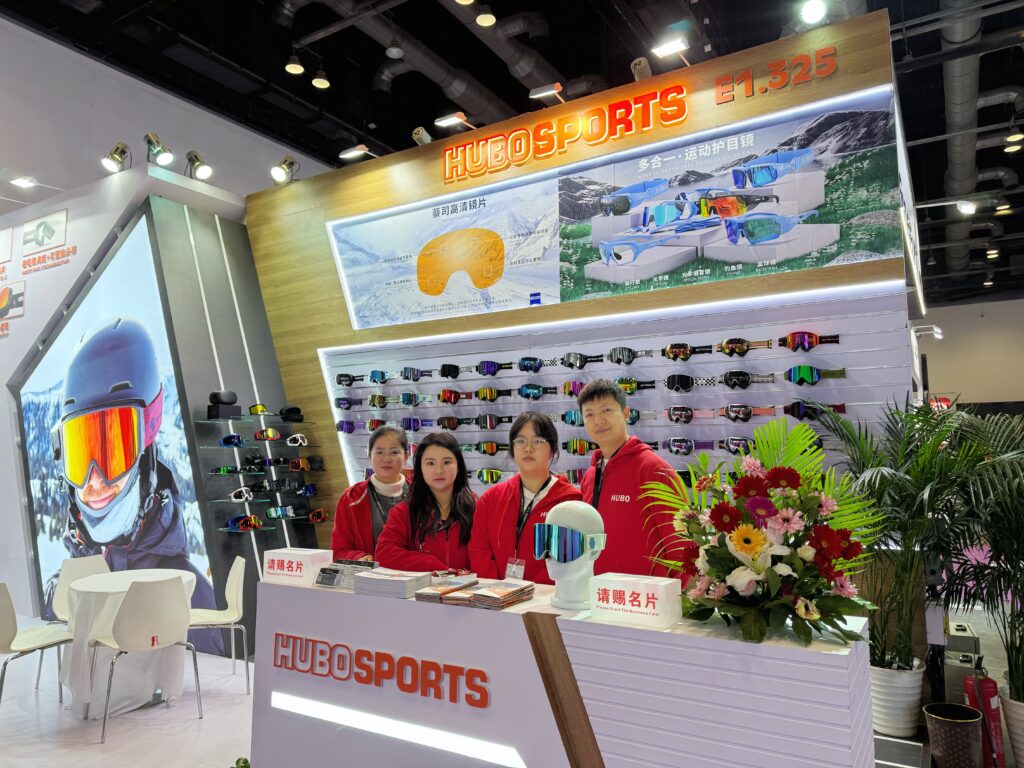Wearing ski goggles with glasses can pose a challenge for many, but fear not! With the right guidance and tips, it’s entirely feasible. Whether it’s finding the perfect ski goggles for glasses or delving into the realm of prescription ski goggles and inserts, we’ve got you covered. Navigating the slopes with clear vision is essential for an enjoyable skiing experience, especially for those who rely on glasses. So let’s dive into the world of ski eyewear and explore the best options for enhancing your skiing adventure while wearing glasses.
OTG (Over the Glasses) Ski Goggles
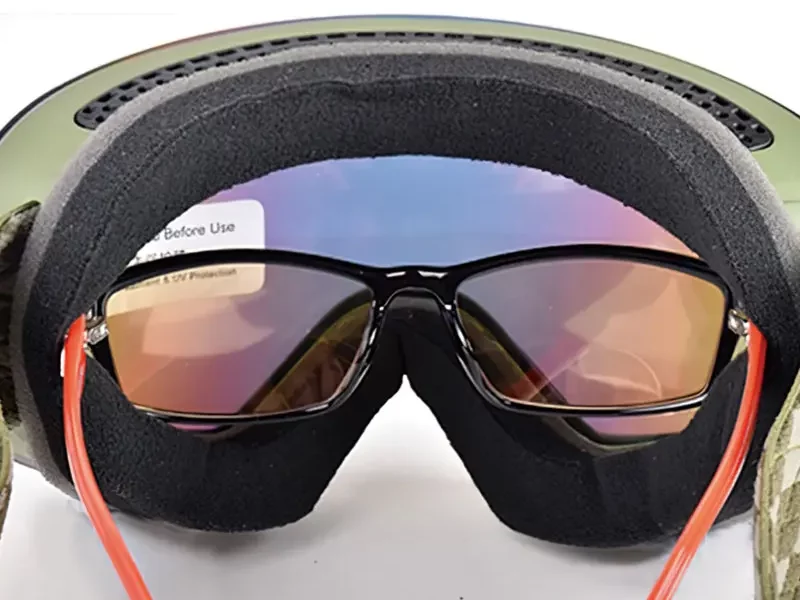
When hitting the slopes with glasses, finding the right ski goggles is crucial for a comfortable and clear skiing experience. One popular option for glasses wearers is OTG (Over the Glasses) ski goggles.
OTG ski goggles are specially designed to fit comfortably over prescription glasses. These goggles feature a wider frame and deeper lens, allowing enough space to accommodate glasses without causing discomfort or pressure on the wearer’s face.
Advantages of OTG Ski Goggles
The primary advantage of OTG ski goggles is that they eliminate the inconvenience of wearing two sets of frames simultaneously. For individuals who rely on prescription eyewear, these ski goggles offer a clear and unobstructed view, ensuring that their vision remains unhindered while navigating the slopes.
Disadvantages of OTG Ski Goggles
While OTG ski goggles provide a practical solution for glasses wearers, some users may find them bulkier compared to regular ski goggles. The larger size can affect the aesthetics and overall fit, potentially causing minor inconveniences for some individuals.
Ski Goggle Prescription Inserts
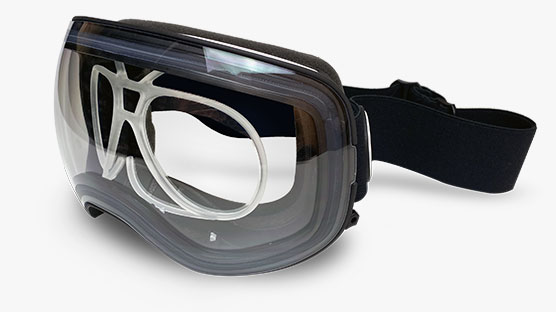
Ski goggle prescription inserts offer a practical solution for individuals who require vision correction while skiing with glasses. These custom-made inserts fit snugly inside the ski goggles, providing the necessary vision correction without compromising comfort or visual clarity.
Advantages of Prescription Inserts
One of the key advantages of using prescription inserts is the convenience and security they offer. Glasses wearers can comfortably ski with corrected vision without the need to wear their regular glasses underneath the goggles.
Additionally, prescription inserts can be effortlessly interchanged between different pairs of ski goggles, providing flexibility and versatility for users who own multiple sets of eyewear.
Disadvantages of Prescription Inserts
While prescription inserts provide an effective solution for vision correction during skiing, some users may find them slightly cumbersome or restrictive. The additional layer within the goggles may impact peripheral vision or contribute to a snugger fit, which could potentially affect overall comfort during extended periods of use.
Prescription Ski Goggles
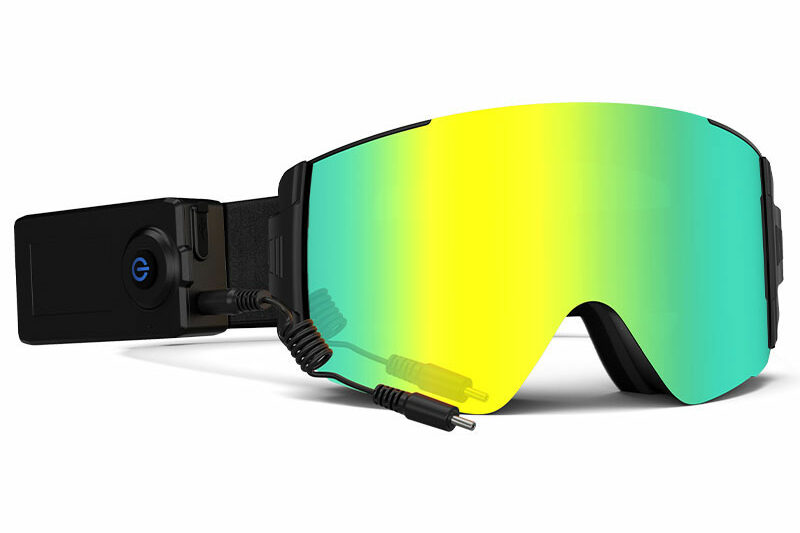
Prescription Ski Goggles are a game-changer for individuals with vision impairments who enjoy hitting the slopes. These specialized ski goggles come equipped with built-in corrective lenses tailored to the wearer’s prescription, providing a seamless solution for clear vision while skiing.
Advantages of Prescription Ski Goggles
The customizable nature of prescription ski goggles sets them apart as an ideal choice for glasses wearers seeking tailored eyewear solutions. Whether it’s adjusting lens tints for different light conditions or incorporating specialized coatings for fog prevention, these goggles offer versatility and comfort.
Furthermore, prescription ski goggles provide a comfortable and snug fit specifically designed for glasses wearers. This ensures that individuals can enjoy a secure and stable eyewear experience without compromising on style or visual performance.
Disadvantage of Prescription Ski Goggles
While prescription ski goggles offer numerous benefits, some users may find them relatively costly compared to other alternatives. The specialized design and customization features can contribute to a higher price point, which may be a consideration for budget-conscious skiers seeking vision correction solutions.
Wearing Contact Lenses for Skiing & Snowboarding

Advantages of Contact Lenses
When it comes to enjoying winter sports like skiing and snowboarding, contact lenses offer a viable alternative for individuals who prefer not to wear glasses under their ski goggles. The use of contact lenses eliminates the inconvenience and discomfort associated with wearing glasses during these activities. Additionally, contact lenses reduce the risk of fogging that is commonly experienced when wearing glasses under ski goggles, ensuring clear and unobstructed vision while navigating the slopes.
Disadvantage of Contact Lenses
Despite their advantages, it’s important to acknowledge that contact lenses may not be suitable for everyone. Some individuals may experience discomfort or dryness when wearing contact lenses in cold, windy environments such as ski resorts. Furthermore, there is a risk of losing a lens during falls or other high-impact activities, which could potentially disrupt the skiing experience.
Considerations for Contact Lens Wearers
For those considering wearing contact lenses while skiing or snowboarding, proper eye care and lens maintenance are crucial. It’s essential to ensure that the lenses are kept clean and free from debris to prevent any discomfort or irritation during outdoor activities. Opting for daily disposable lenses can minimize the risk of debris accumulation and provide added convenience by eliminating the need for cleaning and storage after use.
Which is the Best Solution for Skiing if You Wear Glasses?

When determining the best optical solution for skiing with glasses, it’s essential to compare the various options available and consider their respective advantages and drawbacks. By evaluating these solutions, you can make an informed decision that aligns with your individual needs and preferences.
- OTG Ski Goggles: OTG ski goggles offer a practical solution for individuals who prefer to ski with their regular glasses. While they provide a clear and unobstructed view, some users may find them bulkier compared to standard ski goggles.
- Prescription Inserts: Prescription inserts inside ski goggles offer a convenient way to ski with corrected vision without wearing regular glasses. However, some individuals may find them slightly cumbersome or restrictive during extended use.
- Prescription Ski Goggles: These specialized goggles come with built-in corrective lenses tailored to the wearer’s prescription. They offer a comfortable and tailored fit but may be relatively costly compared to other alternatives.
- Contact Lenses: Contact lenses provide an alternative to wearing glasses under ski goggles, eliminating the risk of fogging and discomfort associated with dual eyewear. However, some individuals may experience dryness or discomfort in cold, windy environments.
How to Prevent Glasses from Fogging under Ski Goggles
Anti-Fogging Techniques
When it comes to enjoying a clear and fog-free skiing experience while wearing glasses under ski goggles, there are several anti-fogging techniques and products that can significantly improve visibility.
- Explore Anti-Fog Coatings and Wipes: Many companies offer specially designed anti-fog coatings and wipes that are formulated to prevent fogging on ski goggles. These products create a thin, transparent film on the inner surface of the goggles, reducing the buildup of moisture that leads to fogging.
- Proper Ventilation and Fit Adjustments: Ensuring adequate ventilation within the ski goggles is essential for minimizing fogging issues. Look for anti-fog goggles with well-designed ventilation systems that promote airflow while preventing the entry of snow or debris. Additionally, making fit adjustments to achieve a snug yet breathable seal can help maintain clear vision by reducing condensation.
Tips for Fog-Free Vision
Maintaining clear vision through fog-free glasses under ski goggles is crucial for an enjoyable skiing experience. Here are some tips to prevent fogging and ensure optimal visibility:
- Pre-Warm Your Goggles and Glasses: Before hitting the slopes, pre-warming your ski goggles and glasses can help prevent condensation and fog buildup. This can be done by placing them in a warm indoor area or using your body heat to gently warm them before venturing out into colder temperatures.
- Ensure a Snug and Secure Fit: A proper fit of the ski goggles is paramount in promoting air circulation and reducing fogging. Adjust the straps to achieve a secure yet comfortable fit that allows adequate airflow around your glasses. A well-fitted pair of ski goggles minimizes moisture retention, thereby preventing fog from obstructing your vision.
By implementing these anti-fogging techniques and tips for maintaining clear vision, skiers with glasses can enjoy an uninterrupted view of the breathtaking winter landscapes while confidently navigating the slopes.
Conclusion
In conclusion, it’s crucial for glasses wearers to find the right eyewear solution for skiing to ensure a comfortable and clear experience on the slopes. Whether they choose OTG ski goggles, prescription inserts, prescription ski goggles, or contact lenses, there are various options available to meet their needs. By weighing the advantages and disadvantages of each option, individuals can make an informed decision that aligns with their preferences and vision correction requirements, with professional advice from an optometrist being highly recommended.

